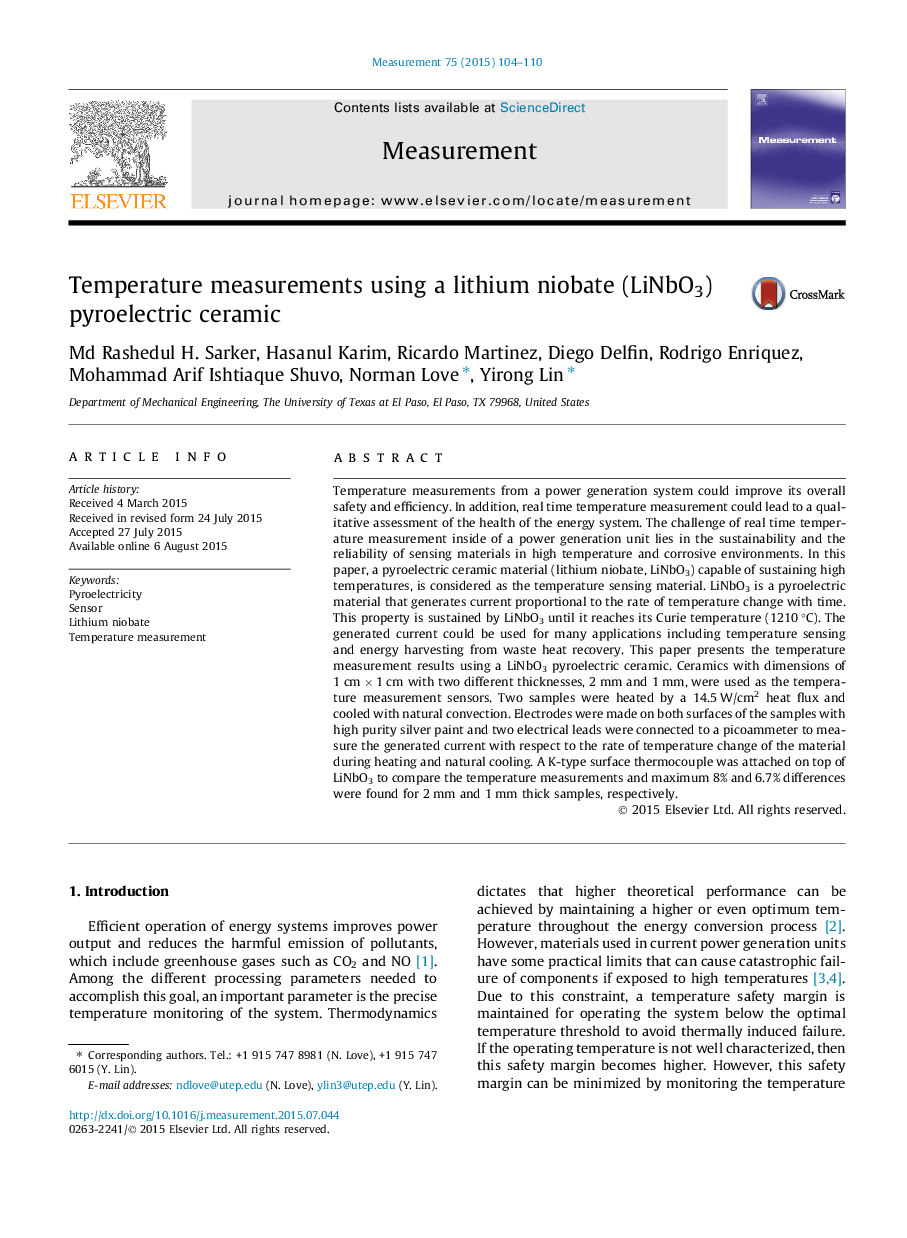| کد مقاله | کد نشریه | سال انتشار | مقاله انگلیسی | نسخه تمام متن |
|---|---|---|---|---|
| 730937 | 1461512 | 2015 | 7 صفحه PDF | دانلود رایگان |

Temperature measurements from a power generation system could improve its overall safety and efficiency. In addition, real time temperature measurement could lead to a qualitative assessment of the health of the energy system. The challenge of real time temperature measurement inside of a power generation unit lies in the sustainability and the reliability of sensing materials in high temperature and corrosive environments. In this paper, a pyroelectric ceramic material (lithium niobate, LiNbO3) capable of sustaining high temperatures, is considered as the temperature sensing material. LiNbO3 is a pyroelectric material that generates current proportional to the rate of temperature change with time. This property is sustained by LiNbO3 until it reaches its Curie temperature (1210 °C). The generated current could be used for many applications including temperature sensing and energy harvesting from waste heat recovery. This paper presents the temperature measurement results using a LiNbO3 pyroelectric ceramic. Ceramics with dimensions of 1 cm × 1 cm with two different thicknesses, 2 mm and 1 mm, were used as the temperature measurement sensors. Two samples were heated by a 14.5 W/cm2 heat flux and cooled with natural convection. Electrodes were made on both surfaces of the samples with high purity silver paint and two electrical leads were connected to a picoammeter to measure the generated current with respect to the rate of temperature change of the material during heating and natural cooling. A K-type surface thermocouple was attached on top of LiNbO3 to compare the temperature measurements and maximum 8% and 6.7% differences were found for 2 mm and 1 mm thick samples, respectively.
Journal: Measurement - Volume 75, November 2015, Pages 104–110